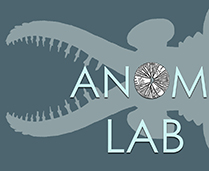In the ANOM Lab we use traditional paleontological techniques combined with quantitative and comparative approaches to extract as much information as possible from the fossil record. We are developing new imaging and analysis techniques to examine anatomy, while also using quantitative methods to describe ecological dynamics, ontogenetic development, and phylogenetic interrelationships. Comparative studies on modern arthropods – experimental taphonomy and decay experiments – provide a framework that is used to better understand taphonomic processes acting during the preservation of these exceptional soft-bodied fossils. The research in the ANOM Lab takes a multi-faceted approach to understanding the fossil record that tells us about the early evolution of animals over 500 million years ago.
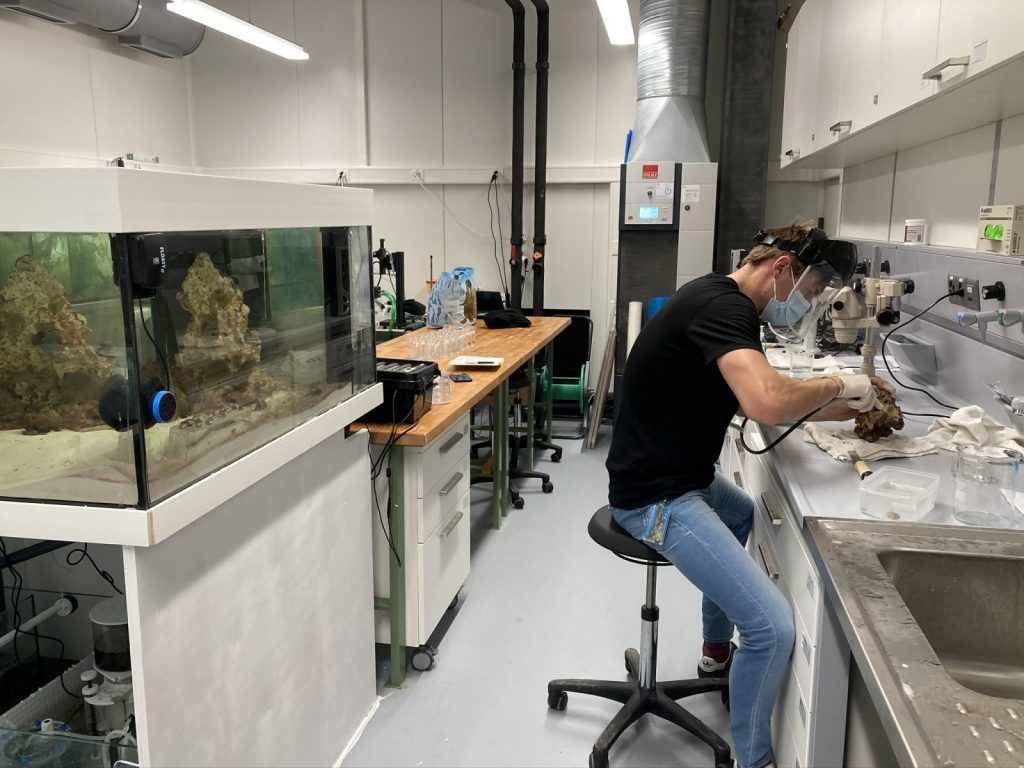
Coral sample preparation for decay experiment by Masters student James Vincent 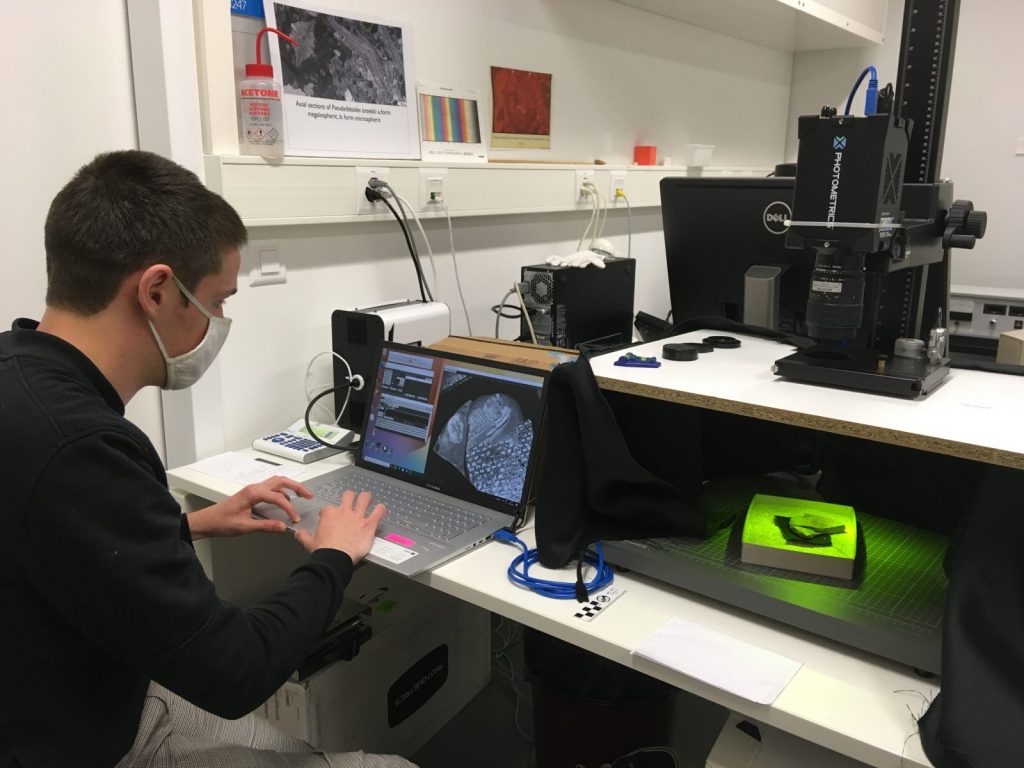
Masters student Gaetan Potin uses the Multispectral Macroimaging system
Facilities employed in ANOM Lab research include:
- Fossil preparation spaces with prep needles and vibrating microchisels
- Macro- and micro-photography setups including Canon digital SLR cameras and Olympus binoculuar microscopes with digital cameras
- Keyence Digital Microscope system with automatic vertical stacking and 3D surface rendering
- Aquarium Research Laboratory with several marine and freshwater tank systems and complete environmental controls, and access to microsensor setup for measuring chemical profiles
- Fume hood laboratory for decay and taphonomy experiments and acid preparation work
- Large compact shelving system to provide collections space for storing over 4 tonnes of Fezouata Shale fossils
- Multispectral Macroimaging system with control over light wavelength and filter channel for the camera
- Scanning Electron Microscopy laboratory with Zeiss Gemini 500 cryo-field emission-variable pressure SEM, Tescan Mira II LMU and CamScan MV2300
- Cathodoluminescence laboratory
Image gallery of our fossil lab facilities:
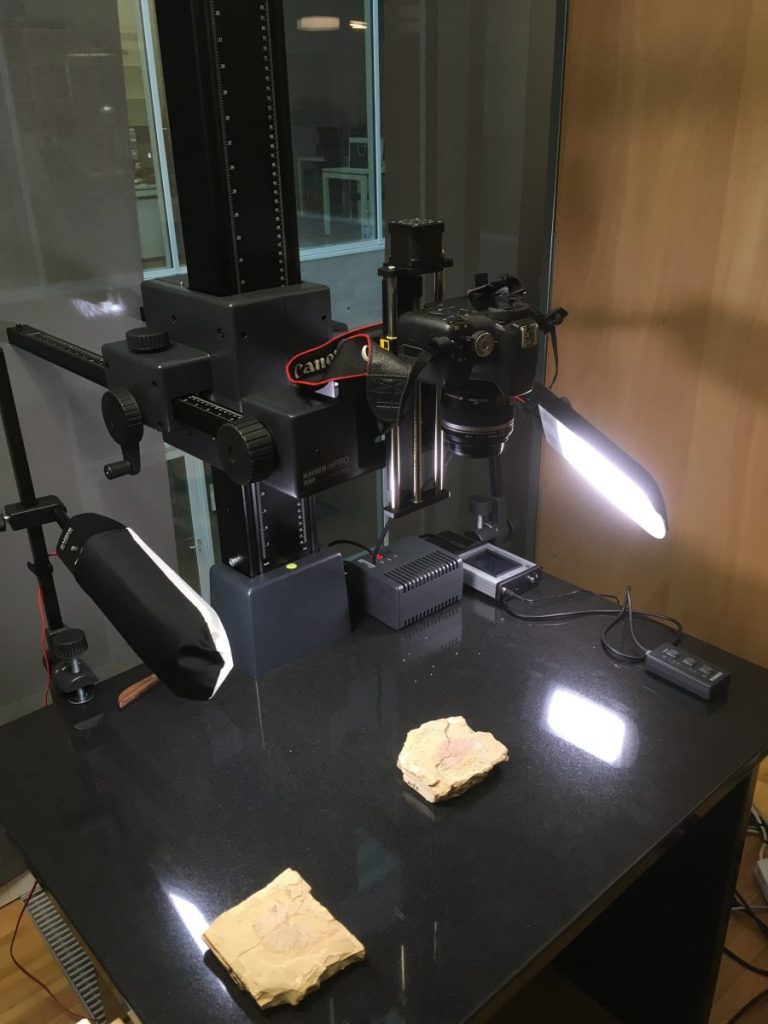
Macro digital photography setup 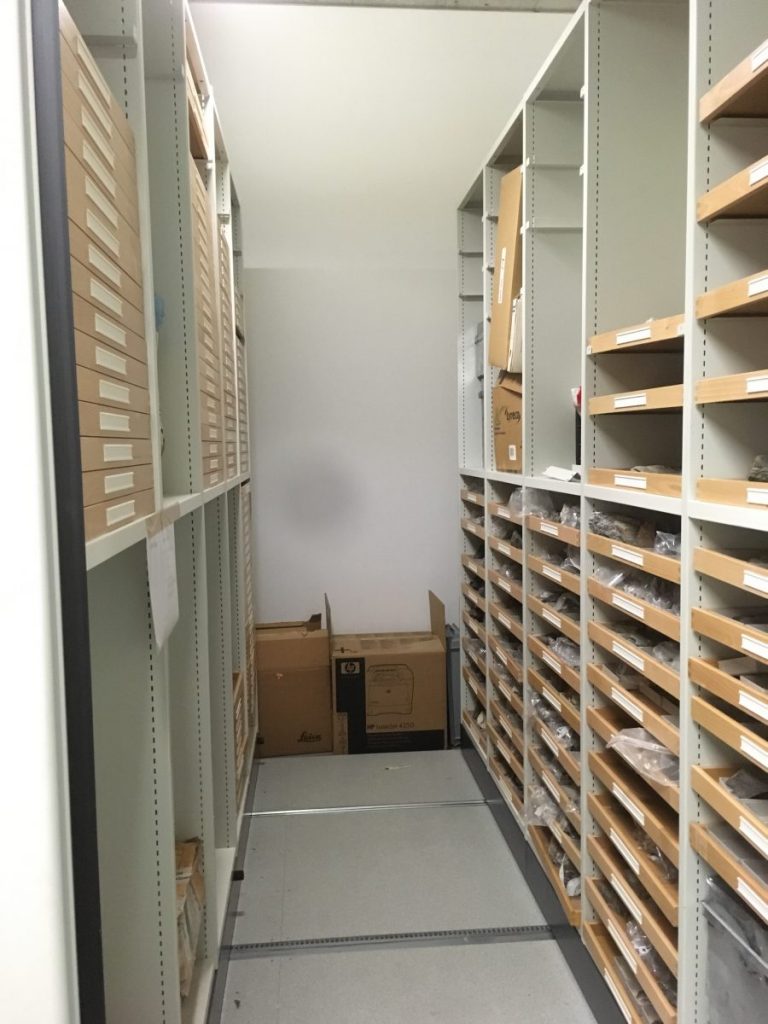
Collections space for Fezouata Shale fossils 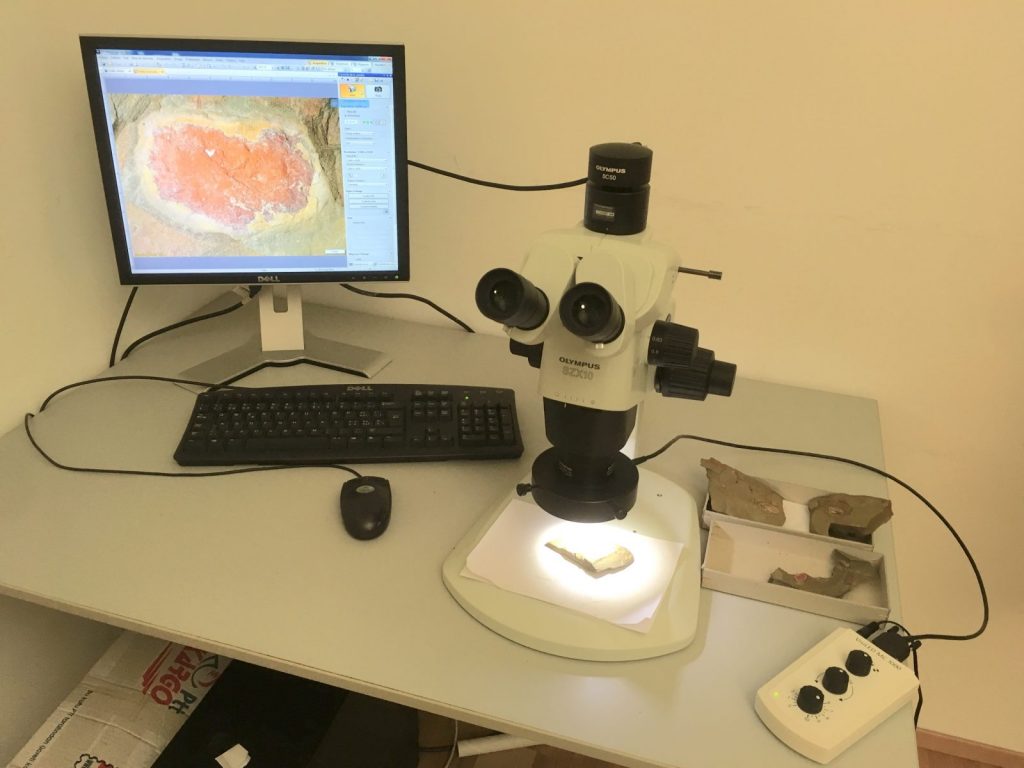
Binocular microscope with digital camera 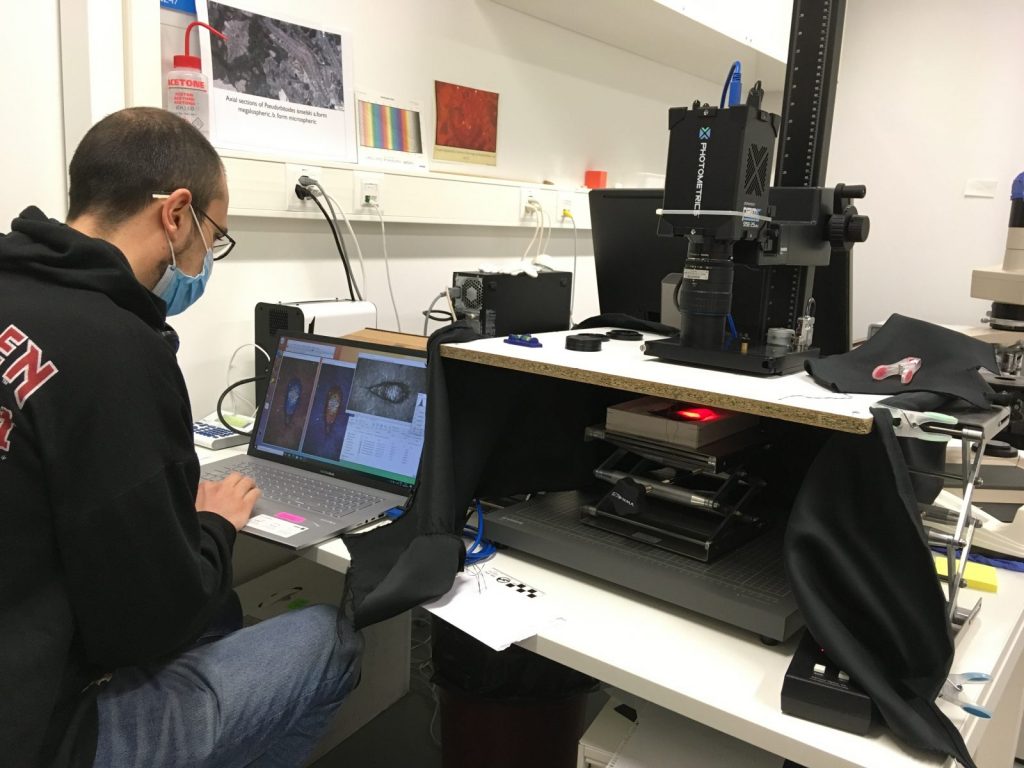
PhD student Lorenzo Lustri uses the Multispectral Macroimaging system 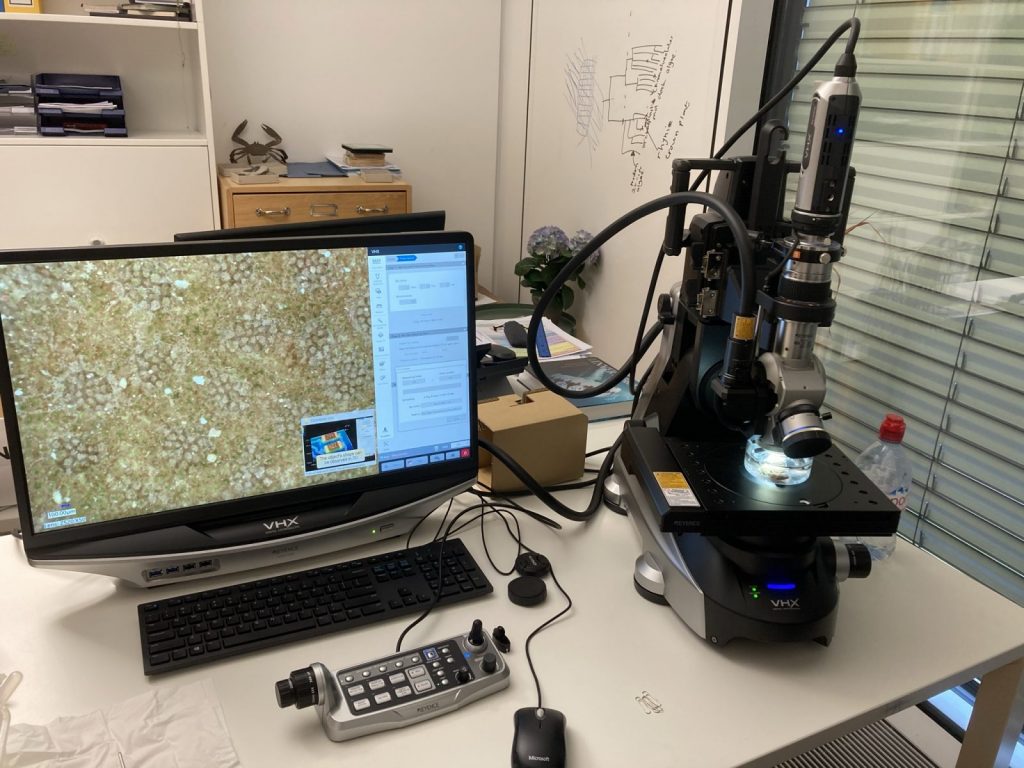
Keyence Digital Microscope
Image gallery of Aquarium Research Lab and experimental taphonomy:
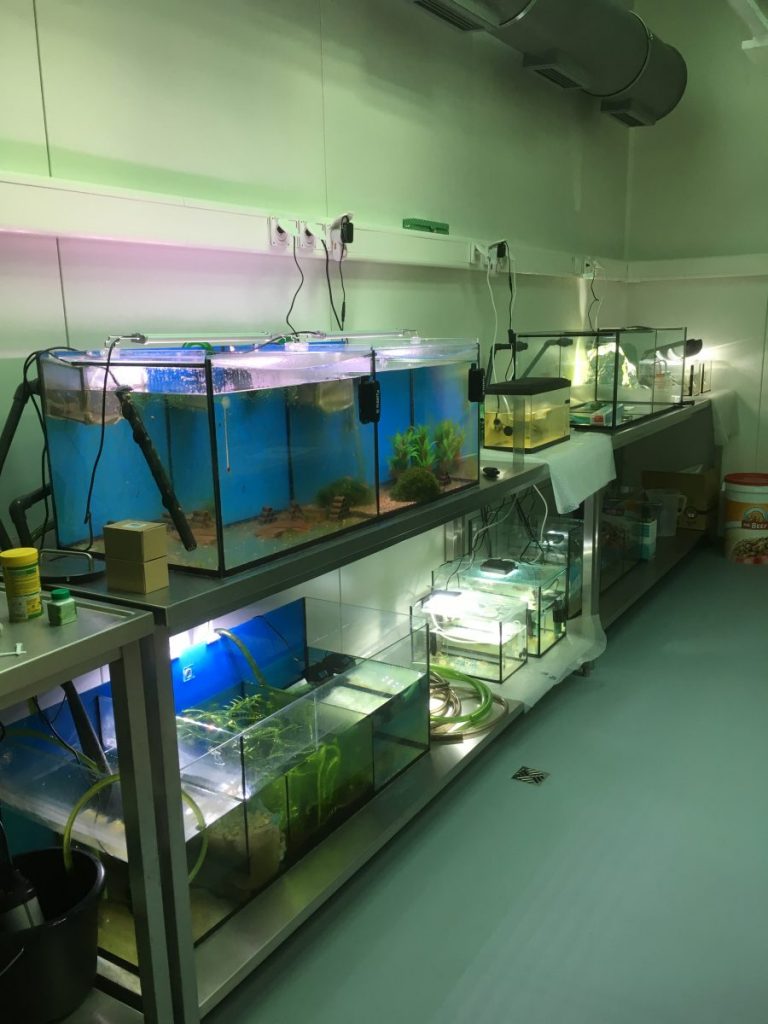
Aquarium lab facilities 
The main marine tank 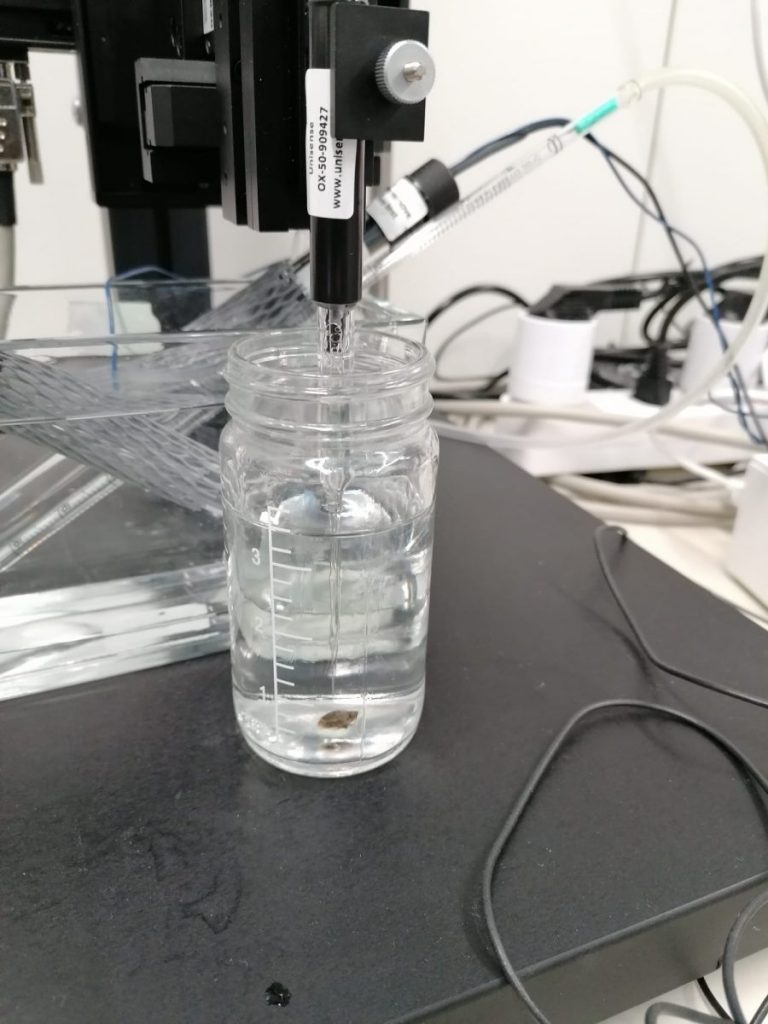
Microsensor decay experiment 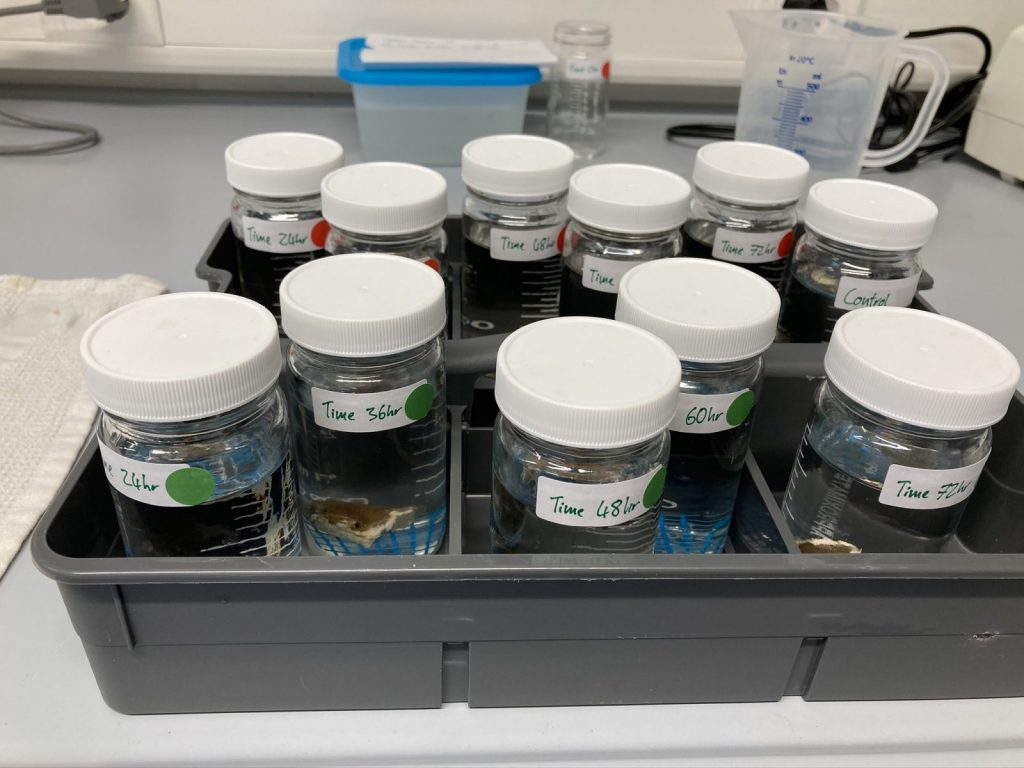
Decay experiment vials 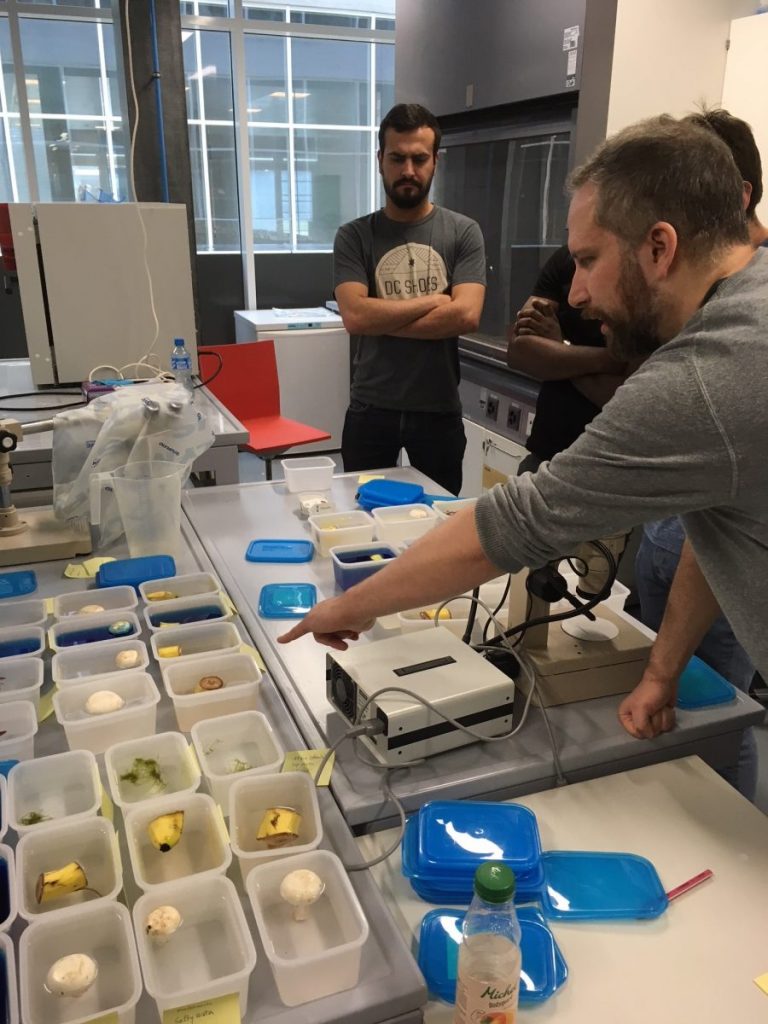
Masters teaching involving decay experiments 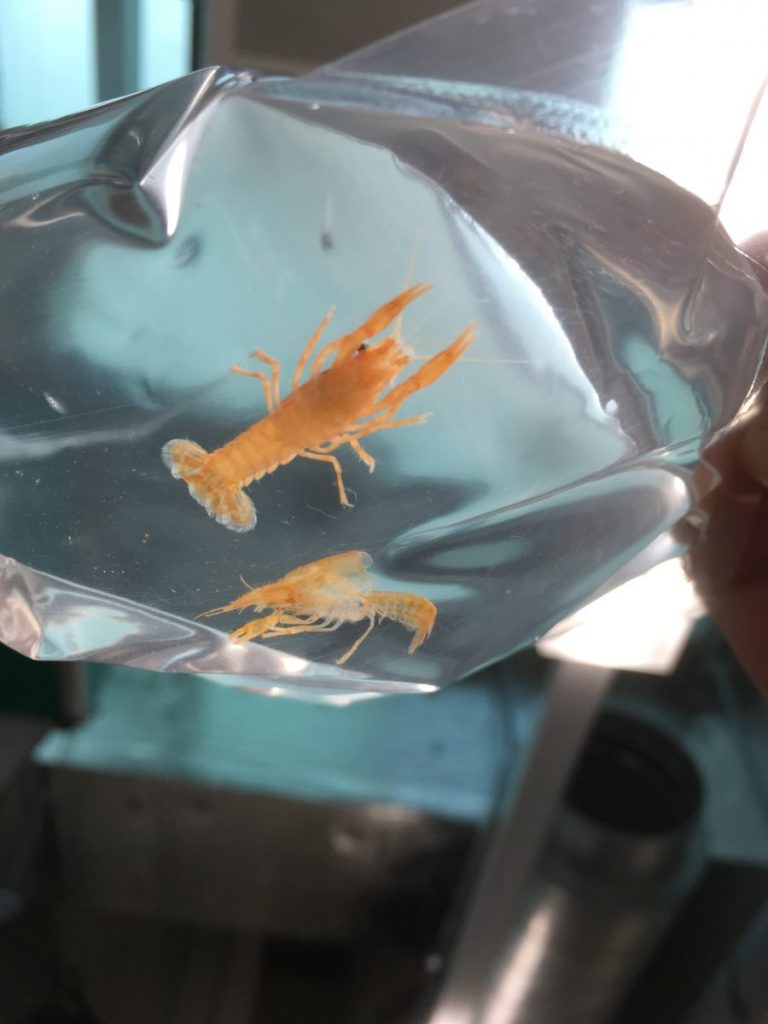
Crayfish destined for decay experiments 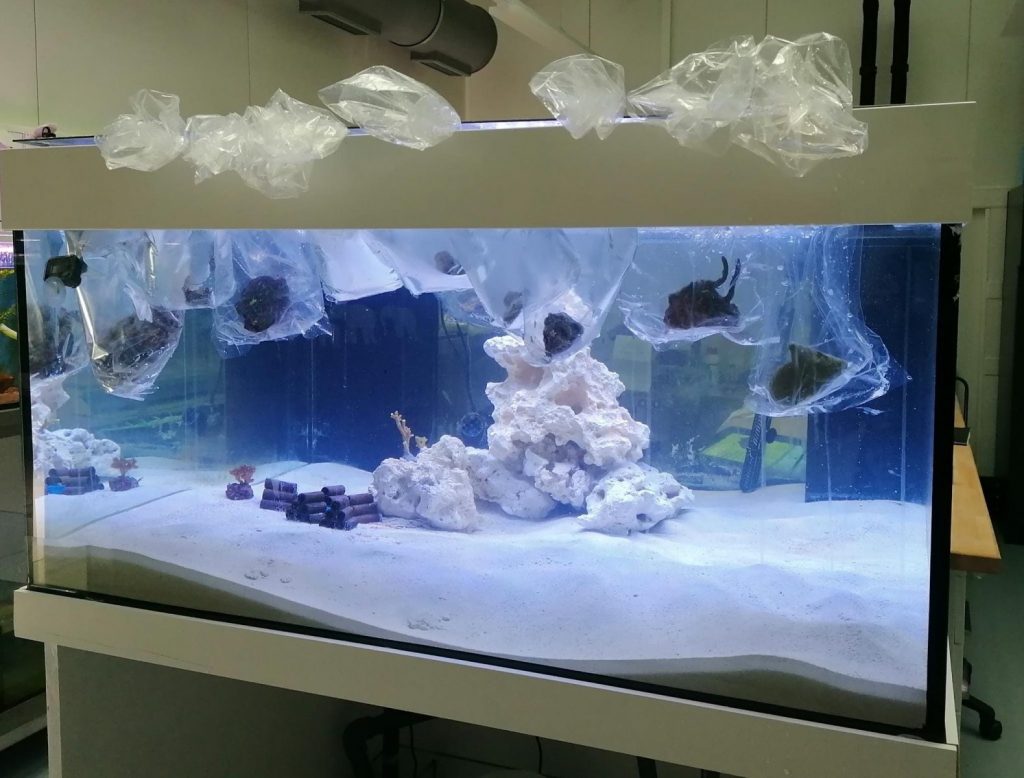
Main marine tank with new arrivals 
Aquarium Research Laboratory
